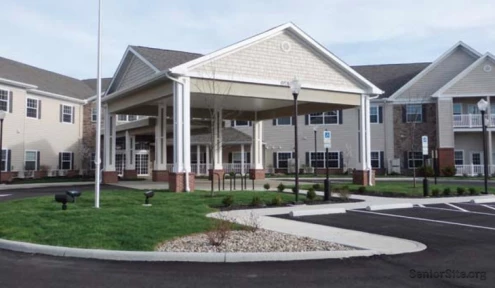One in three patients remains malnourished, costing the U.S. healthcare system $156.7 billion annually, according to healthcare data.
Studies reveal that 5-10% of elderly people in community settings suffer from malnutrition, while the rate increases dramatically to 35-85% in long-term care facilities. Several factors contribute to this problem – grocery shopping difficulties, physical limitations that make cooking challenging, and medication side effects that diminish appetite.
Meal prep for seniors addresses these challenges directly. The systematic preparation approach ensures proper nutrition while simplifying the cooking process. Seniors cooking for themselves or family members helping elderly parents can use meal prep strategies to convert daily meal challenges into organized routines.
This guide outlines how to create an effective meal preparation system specifically designed for senior dietary needs. Each step focuses on keeping the process both simple and enjoyable while addressing the nutritional requirements of older adults.
Step 1: Set Clear Meal Prep Goals
Successful meal prep for seniors requires establishing specific goals based on nutritional needs. Federal dietary guidelines indicate women 60 and older need between 1,600 and 2,200 calories daily, while men in this age group require 2,000 to 2,600 calories.
Health experts emphasize focusing on nutrient-dense foods rather than simply tracking calorie intake. As the body ages, nutritional requirements change significantly, with muscle mass declining 3-5% per decade after age 30.
Consulting healthcare professionals provides the foundation for personalized meal planning. A registered dietitian nutritionist can develop an eating plan tailored to individual needs, particularly important since nutritional requirements vary widely among seniors.
Several key nutrients demand special attention in older adults:
- Protein: USDA Dietary Guidelines report about half of women and a third of men over 71 don’t consume adequate protein
- Vitamin B12: Aging reduces absorption efficiency of this nutrient
- Vitamin D: Daily recommended amounts increase from 15 to 20 micrograms at age 71
- Calcium: Women need 1,200 milligrams daily starting at age 51, men at age 71
- Hydration: Many seniors fail to maintain proper fluid intake
Medical conditions often create additional dietary considerations, such as low-sodium requirements for heart health or increased fiber for digestive issues.
When establishing meal prep frequency, identify your primary goal – whether improving nutrition, saving time, controlling portions, or addressing health concerns. Starting with just 2-3 days of planned meals prevents feeling overwhelmed and allows for adjustments.
Meal quantity decisions should account for:
- Available refrigerator and freezer space
- Personal energy levels for cooking sessions
- Food consumption pace
- Preference for variety versus convenience
Preparing batches sufficient for 2-3 meals balances efficiency with proper food storage. This approach reduces waste while maintaining quality and safety.
Preparing meals ahead of time can actually stimulate appetite – particularly important since older adults face elevated malnutrition risks. Planning before hunger develops allows for simple reheating or combining pre-assembled ingredients at mealtime.
Step 2: Plan a Weekly Menu for Seniors
A well-organized weekly menu serves as the foundation for successful meal preparation. Research shows that cooking at home leads to healthier diets, including lower consumption of calories, carbohydrates, fat, and sugar.
Home-cooked meals also correlate with decreased risk of type 2 diabetes. The U.S. Department of Agriculture reports that consuming varied foods from each food group helps reduce chronic disease risks like high blood pressure and heart disease.
When planning meals for seniors, simplicity proves most effective. Consider these straightforward options:
- Overnight breakfast items like oats, egg bites, or breakfast burritos
- One-pot meals including soups and stews that offer complete nutrition
- Pre-portioned snacks such as hummus with vegetables or whole-grain crackers with cheese
Many grocery stores now stock pre-cut vegetables and canned ingredients that significantly reduce preparation time and physical strain. These products make meal preparation more accessible for seniors with arthritis or limited dexterity.
Nutritional variety remains essential in weekly menu planning. Focus on incorporating these aging-supportive foods:
- Fish (salmon, tuna, halibut)
- Nuts and seeds
- Leafy greens and berries
- Eggs, including the nutrient-rich yolk
- Fermented dairy products
- Beans, lentils, and whole grains
Nearly 40% of seniors experience some form of swallowing difficulty, making food texture a crucial consideration. For those with chewing or swallowing challenges, beneficial modifications include pureeing ingredients, adding extra liquid to dishes, and incorporating naturally soft foods like cooked vegetables, scrambled eggs, and yogurt.
Plant-based proteins such as beans, lentils, and tofu offer softer alternatives when dentures make meat difficult to chew. Despite texture modifications, flavor should never be sacrificed. Herbs, spices, and condiments enhance enjoyment while sauces add both moisture and taste.
Building menus around common ingredients allows for more efficient shopping and preparation. Purchasing certain foods in larger quantities and structuring multiple meals around them reduces both cost and waste.
Through careful planning that addresses ease of preparation, nutritional balance, and texture requirements, seniors can develop sustainable eating routines tailored to their unique needs.
Step 3: Create a Smart Grocery List
A strategic grocery list serves as the foundation for effective meal preparation. With a weekly menu plan established, seniors can create shopping lists that make cooking both easier and more economical.
Frozen foods offer particular advantages for older adults. These items are harvested and frozen at peak ripeness, maintaining their nutritional value and flavor. The National Frozen & Refrigerated Foods Association notes frozen produce is often more nutrient-dense than fresh items that have traveled long distances.
Frozen foods provide several benefits for seniors:
- Pre-chopped options reduce physical strain for those with arthritis
- Various cut options (diced, sliced, minced) save preparation time
- Longer shelf life reduces shopping frequency and food waste
- Often more affordable than fresh counterparts
Pantry staples form another cornerstone of efficient meal preparation. Whole grains like brown rice and quinoa provide sustained energy while helping regulate cholesterol levels. Beans and legumes deliver protein, fiber, and antioxidants in convenient shelf-stable packages.
For protein sources, canned tuna and salmon offer cost-effective options with extended shelf lives. Health experts recommend selecting low-sodium or no-added-salt versions to support heart health.
Pre-prepared ingredients can significantly simplify cooking for seniors despite their slightly higher cost. These convenient options include:
- Pre-washed lettuce and salad greens
- Pre-chopped vegetables
- Rotisserie chicken for immediate use in various dishes
Food safety remains critical when selecting produce. The FDA recommends choosing items without bruising or damage. For pre-cut or packaged produce, select only those properly refrigerated or surrounded by ice. Many pre-packaged items are already washed and ready to eat – information typically noted on packaging.
Budget-conscious seniors benefit from strategic shopping approaches. Store-brand items typically cost 20-30% less than name brands while maintaining comparable quality. For frequently used ingredients, buying in bulk from wholesale retailers often proves economical, especially when menu planning incorporates these items across multiple meals.
Building a well-stocked kitchen happens gradually. Starting with essential items and expanding over time creates a sustainable approach to meal preparation that adapts to individual preferences and needs.
Step 4: Prep and Portion Meals Safely
Food safety becomes increasingly critical for seniors as immune systems naturally weaken with age. The FDA reports that adults over 65 face higher risks from foodborne illnesses due to decreased stomach acid production and slower immune responses. Proper preparation techniques and appropriate tools help maintain kitchen independence without compromising health.
Specialized kitchen equipment transforms meal preparation from challenging to manageable for seniors with limited dexterity. The Arthritis Foundation recommends these adaptive tools:
- Electric can openers eliminate the struggle with manual devices
- Lightweight cutting boards reduce strain during food preparation
- Jar openers and grip mats simplify accessing packaged foods
- Slow cookers or Instant Pots provide “set it and forget it” cooking options
- Food processors offer safer alternatives to manual knife work
Anti-fatigue mats help seniors stand more comfortably during longer preparation sessions, while appropriate kitchen seating allows for rest breaks during cooking, making the process more sustainable.
Clear labeling serves both safety and organizational purposes. The USDA Food Safety and Inspection Service recommends marking each container with contents and preparation date using permanent markers. This practice helps track freshness and prevents consuming spoiled food.
Seniors with vision challenges should consider these adaptations:
- Wearing prescription eyeglasses during food preparation
- Increasing kitchen lighting for better visibility
- Using black markers for high-contrast labeling on light containers
The CDC emphasizes that food safety practices become particularly crucial as we age. Wash hands thoroughly with soap and warm water for at least 20 seconds before, during, and after food handling. Prevent cross-contamination by using separate cutting boards for raw meats and fresh produce.
Cook foods to proper internal temperatures – poultry to 165°F, ground meats to 160°F, and fish to 145°F. Store prepared meals in airtight containers promptly and refrigerate perishable foods within two hours of cooking (one hour if the temperature exceeds 90 degrees).
Maintain refrigerator temperature at or below 40°F and freezer at or below 0°F, checking regularly with an appliance thermometer. Examine stored foods for spoilage signs including off-odors, discoloration, or unusual textures. Food safety experts emphasize one simple rule: when in doubt about food safety, discard it.
Step 5: Store and Rotate Meals Efficiently
Effective storage techniques determine whether prepared meals provide weeks of convenient nutrition or end up wasted. The FDA reports that proper food storage significantly reduces both waste and foodborne illness risks in vulnerable populations like seniors.
Container selection forms the foundation of safe meal storage. Food safety experts recommend considering these options based on specific needs:
- Glass containers move directly from freezer to oven or microwave when lids are removed
- Plastic containers offer versatility and come in various sizes to maximize freezer space
- Foil trays work well for baked dishes and provide convenience for seniors who don’t need containers returned
- Ziplock bags accommodate individual portions of soups or sauces while minimizing storage space
Well-organized storage systems prevent food waste. The USDA Food Safety and Inspection Service recommends labeling each container with both contents and preparation date. This practice helps track freshness and prevents confusion when multiple meals are stored.
Implementing a meal rotation system ensures older items get used first, preventing food from being overlooked or wasted. Refrigerated items should maintain temperatures at or below 40°F and be consumed within 3-5 days. Frozen meals remain safe significantly longer but still benefit from proper rotation.
Reheating methods affect both safety and nutritional value. Food safety guidelines require internal temperatures reach 165°F when reheating prepared foods. Different reheating methods preserve food quality in different ways:
Microwave reheating requires covering foods and rotating halfway through cooking time to eliminate cold spots where bacteria might survive. Food safety experts recommend letting food stand for two minutes after heating before checking its temperature.
Oven reheating maintains textures better than microwave methods. Covering dishes with foil retains moisture, though removing the foil during final minutes allows for browning if desired.
When reheating grains that have dried out, adding a small amount of water helps restore softness. Certain foods like beans, lentils, whole grains, and root vegetables maintain quality particularly well when reheated.
Through strategic storage and reheating techniques, meal prep for seniors becomes both a convenience tool and a method for maximizing nutritional value.
Conclusion
Strategic meal preparation provides seniors with essential nutrition while supporting independence in daily life. Health experts identify proper meal planning as a key factor in reducing malnutrition risks among older adults.
The meal preparation methods outlined in this guide address common challenges seniors face with food preparation. Setting clear nutritional goals based on individual requirements establishes the foundation for effective meal planning. Weekly menu planning incorporating easy-to-prepare options ensures consistent nutrition while accommodating physical limitations.
Smart grocery shopping strategies using pantry staples, frozen items, and pre-prepared ingredients reduce preparation difficulties. Food safety organizations emphasize that seniors face higher risks from foodborne illness, making proper storage and handling techniques particularly important for this age group.
Research shows that seniors who implement organized meal preparation systems maintain better nutritional status than those who approach meals without planning. The National Council on Aging reports that proper nutrition significantly impacts independence, cognitive function, and overall quality of life for older adults.
These strategies work most effectively when implemented gradually and adjusted to individual preferences. The core benefits extend beyond convenient meals – proper nutrition supports cellular function, immune response, and energy levels needed for maintaining independence and well-being in advancing years.
FAQs
Q1. How can meal prepping benefit seniors? Meal prepping can greatly benefit seniors by ensuring proper nutrition, saving time and energy, reducing stress around daily meal preparation, and helping to maintain independence. It also allows for better portion control and can help prevent malnutrition, which is a common concern among older adults.
Q2. What are some easy meal prep ideas for seniors? Easy meal prep ideas for seniors include overnight oats for breakfast, one-pot meals like soups and stews, pre-portioned snacks such as hummus with vegetable sticks, and using pre-cut vegetables to make preparation simpler. Slow cooker or Instant Pot recipes are also great options for effortless cooking.
Q3. How long can prepared meals be safely stored? Prepared meals can be safely stored in the refrigerator for 3-5 days at or below 40°F. Frozen meals can be stored for longer periods, but it’s important to label containers with the contents and preparation date. Always check for signs of spoilage before consuming stored meals.
Q4. What kitchen tools are helpful for seniors when meal prepping? Helpful kitchen tools for seniors include electric can openers, lightweight cutting boards, jar openers, slow cookers, food processors, and anti-fatigue mats. These tools can make meal preparation easier and safer, especially for those with arthritis or limited mobility.
Q5. How can seniors ensure they’re meeting their nutritional needs through meal prep? Seniors can ensure they’re meeting their nutritional needs by focusing on nutrient-dense foods, including a variety of fruits, vegetables, lean proteins, and whole grains in their meal plans. It’s also important to consult with a healthcare professional or registered dietitian to understand individual dietary requirements and any necessary restrictions.












